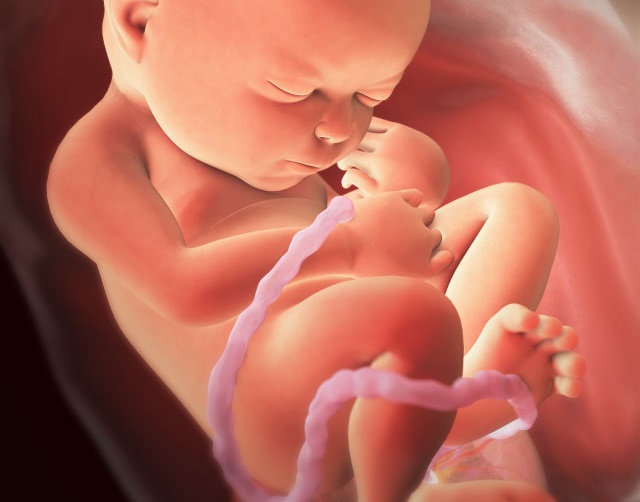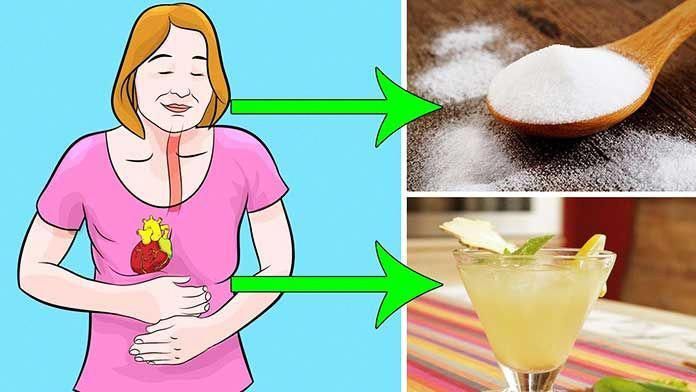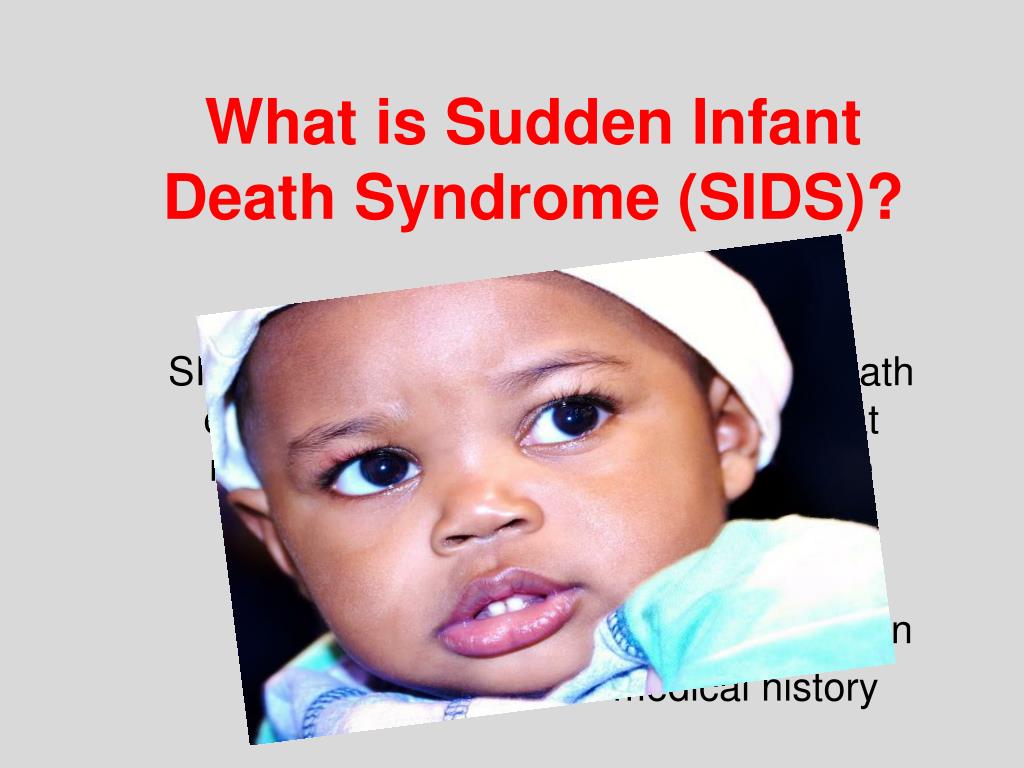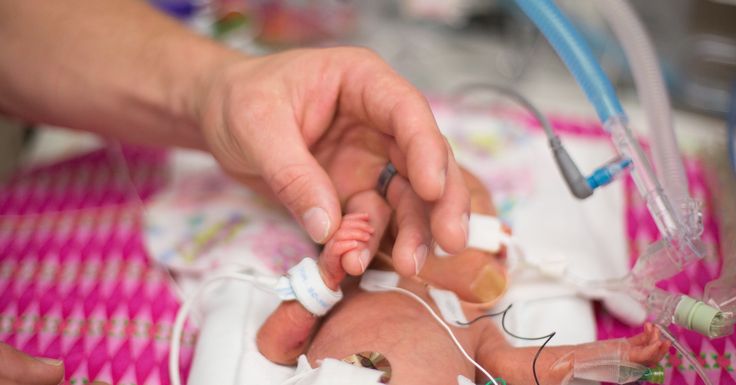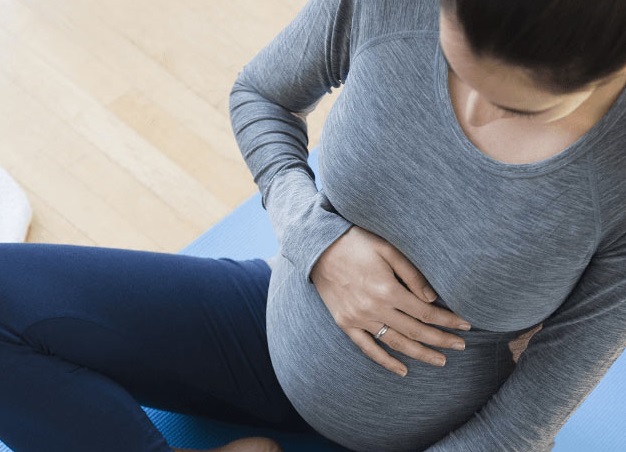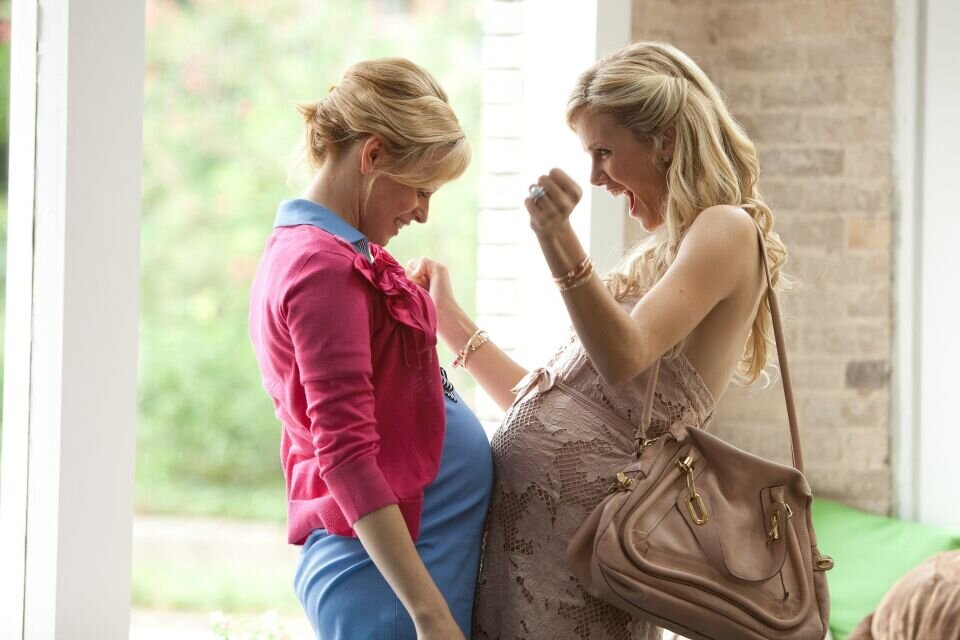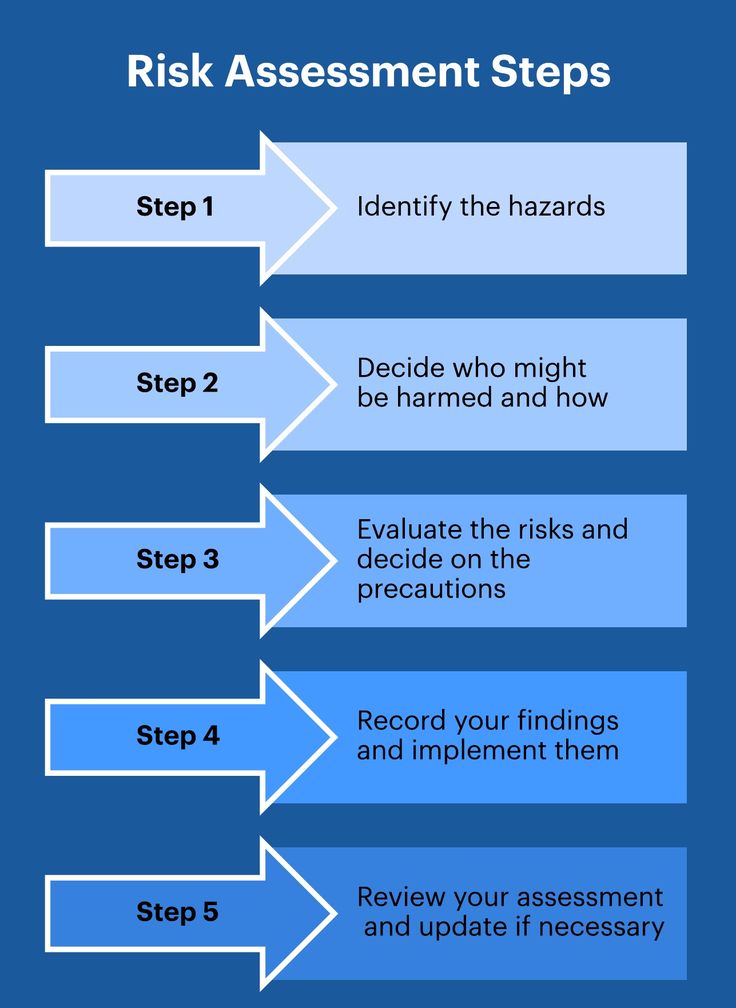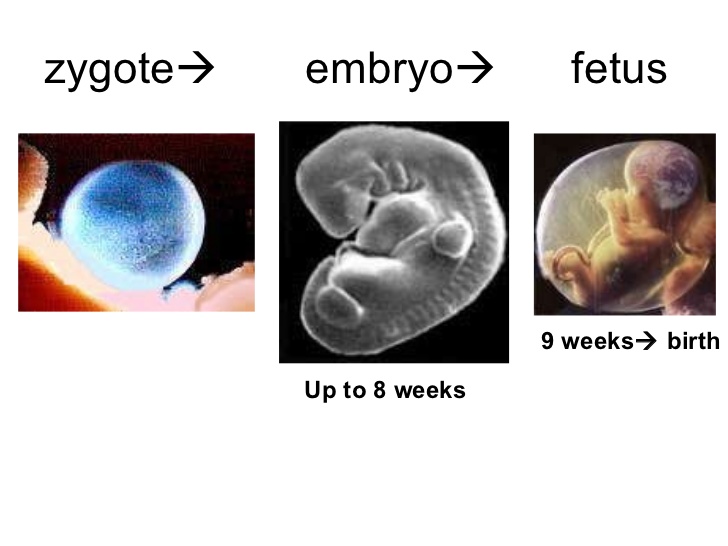When is a baby fully formed in the womb
Fetal development: Month-By-Month Stages of Pregnancy
When does a pregnancy start?
The start of pregnancy is actually the first day of your last menstrual period. This is called the gestational age, or menstrual age. It’s about two weeks ahead of when conception actually occurs. Though it may seem strange, the date of the first day of your last period will be an important date when determining your due date. Your healthcare provider will ask you about this date and will use it to figure out how far along you are in your pregnancy.
How does conception work?
Each month, your body goes through a reproductive cycle that can end in one of two ways. You will either have a menstrual period or become pregnant. This cycle is continuously happening during your reproductive years — from puberty in your teen years to menopause around age 50.
In a cycle that ends with pregnancy, there are several steps. First, a group of eggs (called oocytes) gets ready to leave the ovary for ovulation (release of the egg). The eggs develop in small, fluid-filled cysts called follicles. Think of these follicles as small containers for each immature egg. Out of this group of eggs, one will become mature and continue on through the cycle. This follicle then suppresses all the other follicles in the group. The other follicles stop growing at this point.
The mature follicle now opens and releases the egg from the ovary. This is ovulation. Ovulation generally happens about two weeks before your next menstrual period begins. It’s generally in the middle of your cycle.
After ovulation, the opened (ruptured) follicle develops into a structure called the corpus luteum. This secretes (releases) the hormones progesterone and estrogen. Progesterone helps prepare the endometrium (lining of the uterus). This lining is the place where a fertilized egg settles to develop. If you don’t become pregnant during a cycle, this lining is what is shed during your period.
On average, fertilization happens about two weeks after your last menstrual period.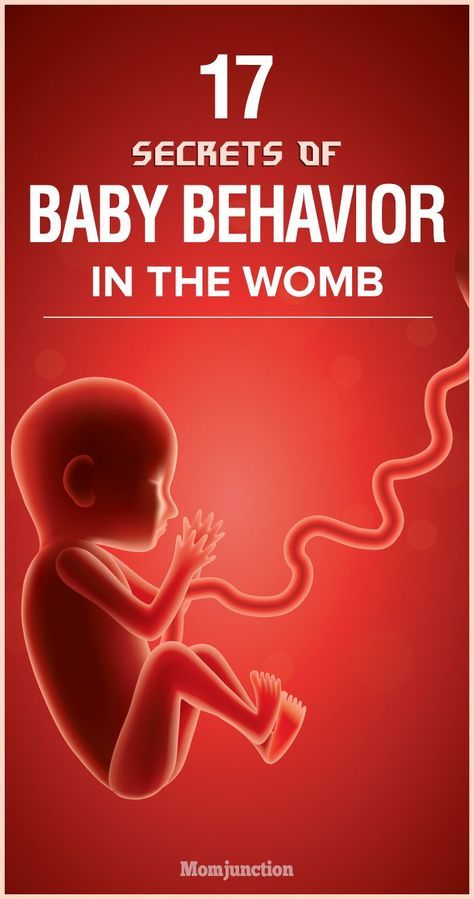 When the sperm penetrates the egg, changes occur in the protein coating of the egg to prevent other sperm from entering.
When the sperm penetrates the egg, changes occur in the protein coating of the egg to prevent other sperm from entering.
At the moment of fertilization, your baby’s genetic make-up is complete, including its sex. The sex of your baby depends on what sperm fertilizes the egg at the moment of conception. Generally, women have a genetic combination of XX and men have XY. Women provide each egg with an X. Each sperm can be either an X or a Y. If the fertilized egg and sperm is a combination of an X and Y, it’s a boy. If there are two Xs, it’s a girl.
What happens right after conception?
Within 24 hours after fertilization, the egg begins rapidly dividing into many cells. It remains in the fallopian tube for about three days after conception. Then the fertilized egg (now called a blastocyte) continues to divide as it passes slowly through the fallopian tube to the uterus. Once there, its next job is to attach to the endometrium. This is called implantation.
Before implantation though, the blastocyte breaks out of its protective covering. When the blastocyte makes contact with the endometrium, the two exchange hormones to help the blastocyte attach. Some women notice spotting (slight bleeding) during the one or two days when implantation happens. This is normal and isn’t something you should worry about. At this point, the endometrium becomes thicker and the cervix (the opening between your uterus and birth canal) is sealed by a plug of mucus.
When the blastocyte makes contact with the endometrium, the two exchange hormones to help the blastocyte attach. Some women notice spotting (slight bleeding) during the one or two days when implantation happens. This is normal and isn’t something you should worry about. At this point, the endometrium becomes thicker and the cervix (the opening between your uterus and birth canal) is sealed by a plug of mucus.
Within three weeks, the blastocyte cells ultimately form a little ball, or an embryo. By this time, the first nerve cells have formed.
Your developing fetus has already gone through a few name changes in the first few weeks of pregnancy. Generally, it's called an embryo from conception until the eighth week of development. After the eighth week, it's called a fetus until it’s born.
How early can I know I’m pregnant?
From the moment of conception, the hormone human chorionic gonadotrophin (hCG) will be present in your blood. This hormone is created by the cells that form the placenta (food source for the growing fetus).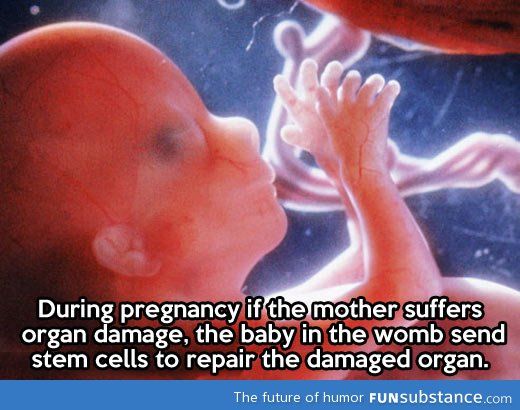 It’s also the hormone detected in a pregnancy test. Even though this hormone is there from the beginning, it takes time for it to build within your body. It typically takes three to four weeks from the first day of your last period for the hCG to increase enough to be detected by pregnancy tests.
It’s also the hormone detected in a pregnancy test. Even though this hormone is there from the beginning, it takes time for it to build within your body. It typically takes three to four weeks from the first day of your last period for the hCG to increase enough to be detected by pregnancy tests.
When should I reach out to my healthcare provider about a new pregnancy?
Most healthcare providers will have you wait to come in for an appointment until you have had a positive home pregnancy test. These tests are very accurate once you have enough hCG circulating throughout your body. This can be a few weeks after conception. It’s best to call your healthcare provider once you have a positive pregnancy test to schedule your first appointment.
When you call, your healthcare provider may ask you if you are taking a prenatal vitamin. These supplements contain folic acid. It’s important that you get at least 400mcg of folic acid each day during a pregnancy to make sure the fetus's neural tube (beginning of the brain and spine) develops correctly.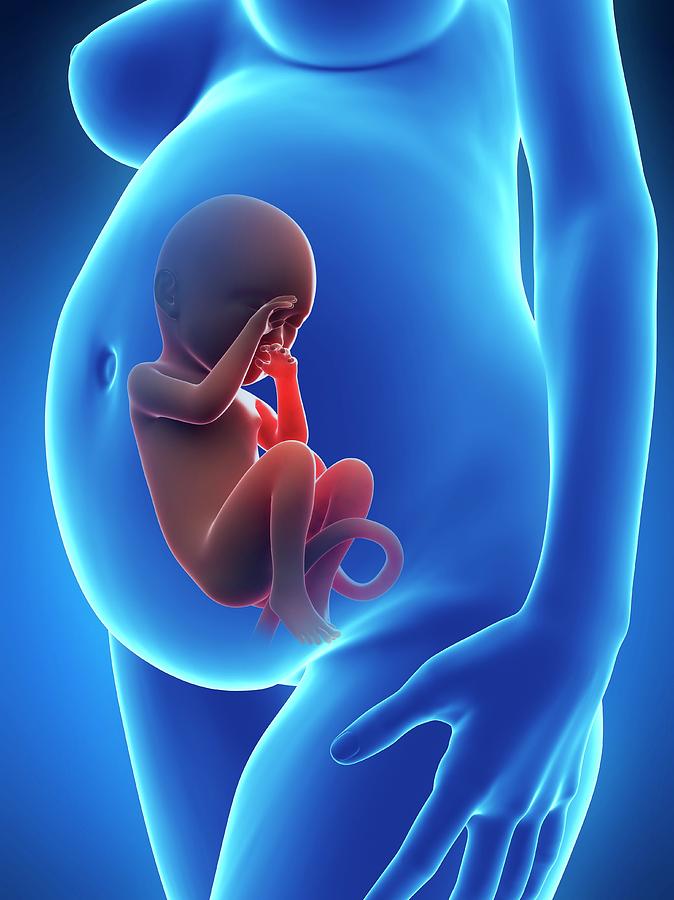 Many healthcare providers suggest that you take prenatal vitamins with folic acid even when you aren’t pregnant. If you weren’t taking prenatal vitamins before your pregnancy, your provider may ask you to start as early as possible.
Many healthcare providers suggest that you take prenatal vitamins with folic acid even when you aren’t pregnant. If you weren’t taking prenatal vitamins before your pregnancy, your provider may ask you to start as early as possible.
What’s the timeline for fetal development?
The fetus will change a lot throughout a typical pregnancy. This time is divided into three stages, called trimesters. Each trimester is a set of about three months. Your healthcare provider will probably talk to you about fetal development in terms of weeks. So, if you are three months pregnancy, you are about 12 weeks.
You will see distinct changes in the fetus, and yourself, during each trimester.
Traditionally, we think of a pregnancy as a nine-month process. However, this isn’t always the case. A full-term pregnancy is 40 weeks, or 280 days. Depending on what months you are pregnant during (some are shorter and some longer) and what week you deliver, you could be pregnant for either nine months or 10 months. This is completely normal and healthy.
This is completely normal and healthy.
Once you get close to the end of your pregnancy, there are several category names you might hear regarding when you go into labor. These labels divide up the last few weeks of pregnancy. They’re also used to look out for certain complications in newborns. Babies that are born in the early term period or before may have a higher risk of breathing, hearing or learning issues than babies born a few weeks later in the full term time frame. When you’re looking at these labels, it’s important to know how they’re written. You may see the week first (38) and then you’ll see two numbers separated by a slash mark (6/7). This stands for how many days you currently are in the gestational week. So, if you see 38 6/7, it means that you are on day 6 of your 38th week.
The last few weeks of pregnancy are divided into the following groups:
- Early term: 37 0/7 weeks through 38 6/7 weeks.
- Full term: 39 0/7 weeks through 40 6/7 weeks.
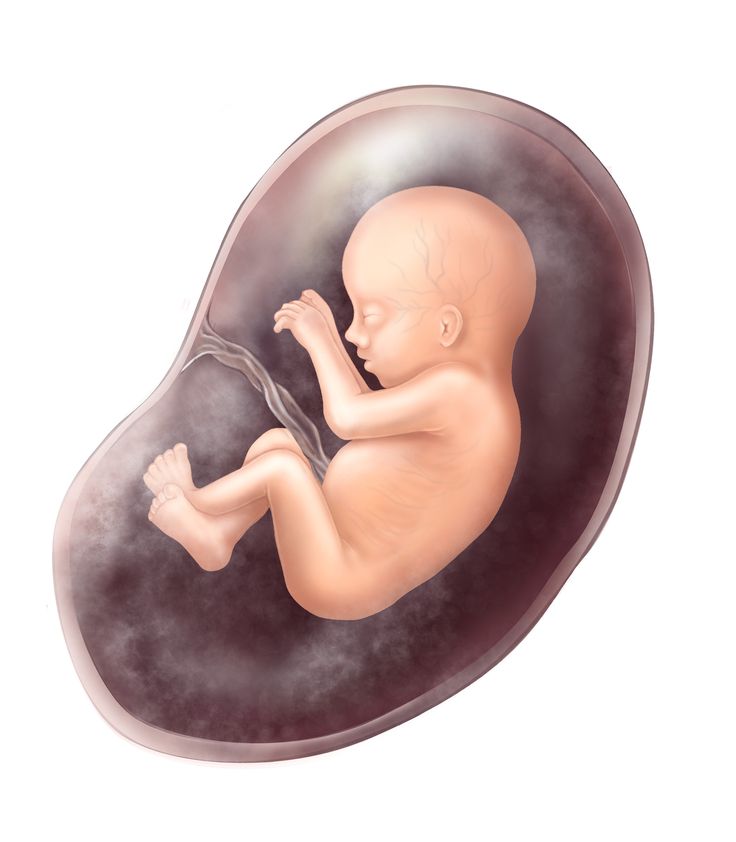
- Late term: 41 0/7 weeks through 41 6/7 weeks.
- Post term: 42 0/7 weeks and on.
Talk to your healthcare provider about any questions you may have about gestational age and due date.
Stages of Growth Month-by-Month in Pregnancy
First trimester
The first trimester will span from conception to 12 weeks. This is generally the first three months of pregnancy. During this trimester, the fertilized egg will change from a small grouping of cells to a fetus that is starting to have a baby’s features.
Month 1 (weeks 1 through 4)
As the fertilized egg grows, a water-tight sac forms around it, gradually filling with fluid. This is called the amniotic sac, and it helps cushion the growing embryo.
During this time, the placenta also develops. The placenta is a round, flat organ that transfers nutrients from the mother to the fetus, and transfers wastes from the fetus. Think of the placenta as a food source for the fetus throughout your pregnancy.
In these first few weeks, a primitive face will take form with large dark circles for eyes. The mouth, lower jaw and throat are developing. Blood cells are taking shape, and circulation will begin. The tiny "heart" tube will beat 65 times a minute by the end of the fourth week.
By the end of the first month, the fetus is about 1/4 inch long – smaller than a grain of rice.
Month 2 (weeks 5 through 8)
Facial features continue to develop. Each ear begins as a little fold of skin at the side of the head. Tiny buds that eventually grow into arms and legs are forming. Fingers, toes and eyes are also forming.
The neural tube (brain, spinal cord and other neural tissue of the central nervous system) is well formed now. The digestive tract and sensory organs begin to develop too. Bone starts to replace cartilage.
The head is large in proportion to the rest of the body at this point. At about 6 weeks, a heartbeat can usually be detected.
After the 8th week, healthcare providers refer to it as a fetus instead of an embryo.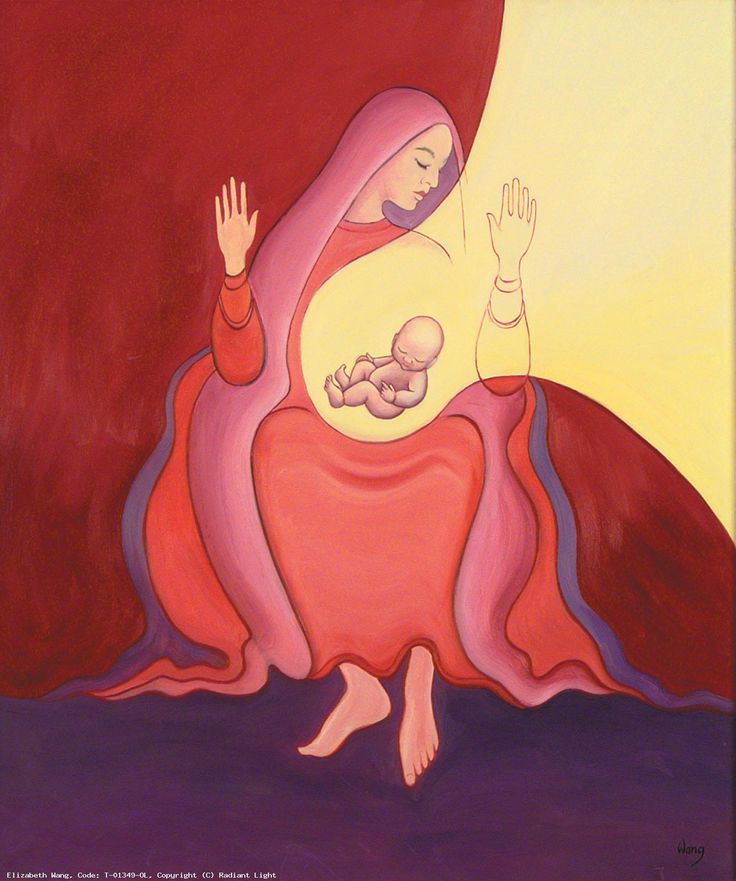
By the end of the second month, the fetus is about 1 inch long and weighs about 1/30 of an ounce.
Month 3 (weeks 9 through 12)
The arms, hands, fingers, feet and toes are fully formed. At this stage, the fetus is starting to explore a bit by doing things like opening and closing its fists and mouth. Fingernails and toenails are beginning to develop and the external ears are formed. The beginnings of teeth are forming under the gums. The reproductive organs also develop, but sex is still difficult to distinguish on ultrasound.
By the end of the third month, the fetus is fully formed. All the organs and limbs (extremities) are present and will continue to develop in order to become functional. The circulatory and urinary systems are also working and the liver produces bile.
At the end of the third month, the fetus is about 4 inches long and weighs about 1 ounce.
Since the most critical development has taken place, your chance of miscarriage drops considerably after three months.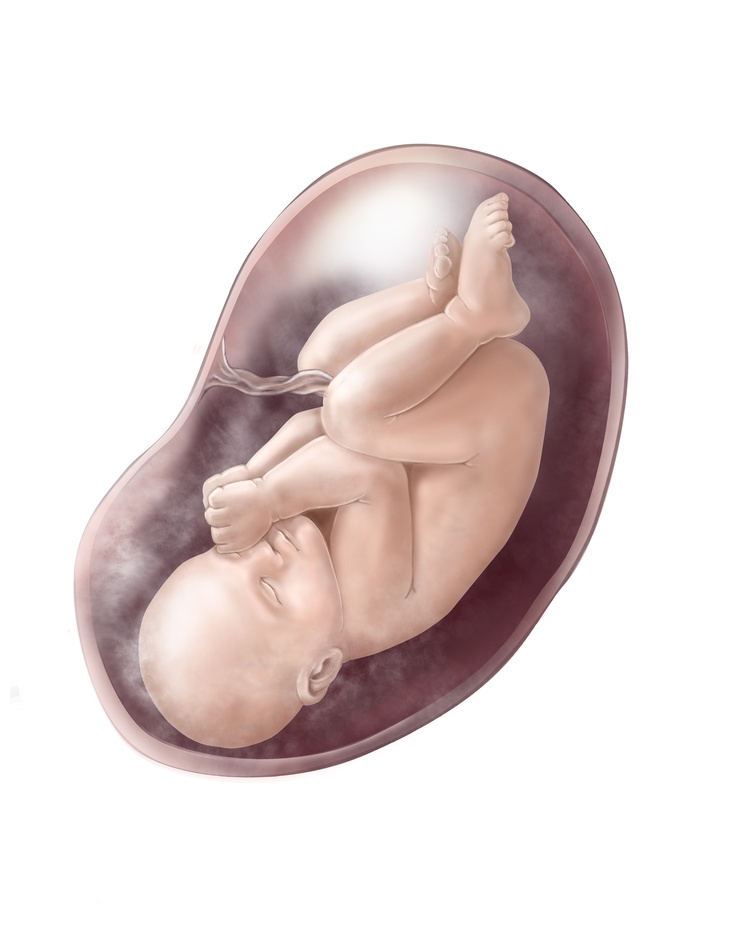
Second trimester
This middle section of pregnancy is often thought of as the best part of the experience. By this time, any morning sickness is probably gone and the discomfort of early pregnancy has faded. The fetus will start to develop facial features during this month. You may also start to feel movement as the fetus flips and turns in the uterus. During this trimester, many people find out whether their baby will be designated male or female at birth. This is typically done during an anatomy scan (an ultrasound that checks physical development) around 20 weeks.
Month 4 (weeks 13 through 16)
The fetal heartbeat may now be audible through an instrument called a doppler. The fingers and toes are well-defined. Eyelids, eyebrows, eyelashes, nails and hair are formed. Teeth and bones become denser. The fetus can even suck his or her thumb, yawn, stretch and make faces.
The nervous system is starting to function. The reproductive organs and genitalia are now fully developed, and your doctor can see on ultrasound if the fetus will be designated male or female at birth.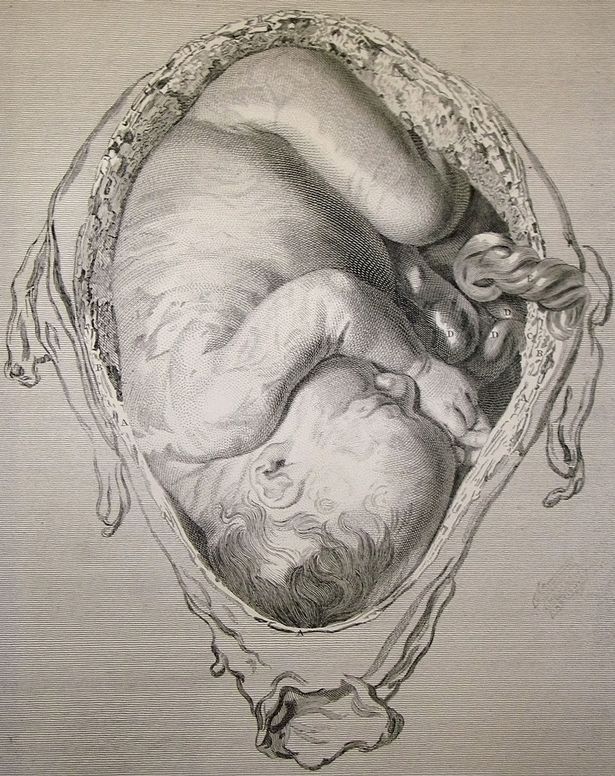
By the end of the fourth month, the fetus is about 6 inches long and weighs about 4 ounces.
Month 5 (weeks 17 through 20)
At this stage, you may begin to feel the fetus moving around. The fetus is developing muscles and exercising them. This first movement is called quickening and can feel like a flutter.
Hair begins to grow on the head. The shoulders, back and temples are covered by a soft fine hair called lanugo. This hair protects the fetus and is usually shed at the end of your baby's first week of life.
The skin is covered with a whitish coating called vernix caseosa. This "cheesy" substance is thought to protect fetal skin from the long exposure to the amniotic fluid. This coating is shed just before birth.
By the end of the fifth month, the fetus is about 10 inches long and weighs from 1/2 to 1 pound.
Month 6 (weeks 21 through 24)
If you could look inside the uterus right now, you would see that the fetus's skin is reddish in color, wrinkled and veins are visible through translucent skin. The finger and toe prints are visible. In this stage, the eyelids begin to part and the eyes open.
The finger and toe prints are visible. In this stage, the eyelids begin to part and the eyes open.
The fetus responds to sounds by moving or increasing the pulse. You may notice jerking motions if the fetus hiccups.
If born prematurely, your baby may survive after the 23rd week with intensive care.
By the end of the sixth month, the fetus is about 12 inches long and weighs about 2 pounds.
Month 7 (weeks 25 through 28)
The fetus continues to mature and develop reserves of body fat. At this point, hearing is fully developed. The fetus changes position frequently and responds to stimuli, including sound, pain and light. The amniotic fluid begins to diminish.
If born prematurely, your baby would be likely to survive after the seventh month.
At the end of the seventh month, the fetus is about 14 inches long and weighs from 2 to 4 pounds.
Third trimester
This is the final part of your pregnancy. You may be tempted to start the countdown till your due date and hope that it would come early, but each week of this final stage of development helps the fetus prepare for birth.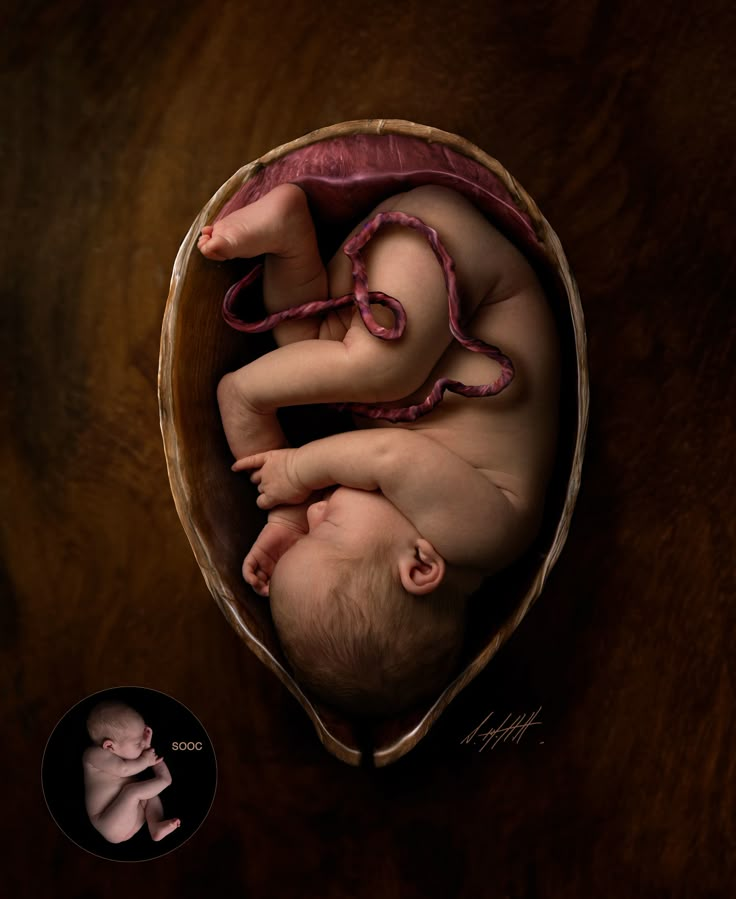 Throughout the third trimester, the fetus gains weight quickly, adding body fat that will help after birth.
Throughout the third trimester, the fetus gains weight quickly, adding body fat that will help after birth.
Remember, even though popular culture only mentions nine months of pregnancy, you may actually be pregnant for 10 months. The typical, full-term pregnancy is 40 weeks, which can take you into a tenth month. It’s also possible that you can go past your due date by a week or two (41 or 42 weeks). Your healthcare provider will monitor you closely as you approach your due date. If you pass your due date, and don’t go into spontaneous labor, your provider may induce you. This means that medications will be used to make you go into labor and have the baby. Make sure to talk to your healthcare provider during this trimester about your birth plan.
Month 8 (weeks 29 through 32)
The fetus continues to mature and develop reserves of body fat. You may notice more kicking. The brain developing rapidly at this time, and the fetus can see and hear. Most internal systems are well developed, but the lungs may still be immature.
The fetus is about 18 inches long and weighs as much as 5 pounds.
Month 9 (weeks 33 through 36)
During this stage, the fetus continues to grow and mature. The lungs are close to being fully developed at this point.
The fetus has coordinated reflexes and can blink, close the eyes, turn the head, grasp firmly, and respond to sounds, light and touch.
The fetus is about 17 to 19 inches long and weighs from 5 ½ pounds to 6 ½ pounds.
Month 10 (Weeks 37 through 40)
In this final month, you could go into labor at any time. You may notice that less movement because space is tight. At this point, The fetus's position may have changed to prepare for birth. Ideally, it's head down in your uterus. You may feel very uncomfortable in this final stretch of time as the fetus drops down into your pelvis and prepares for birth.
Your baby is ready to meet the world at this point. They are about 18 to 20 inches long and weigh about 7 pounds.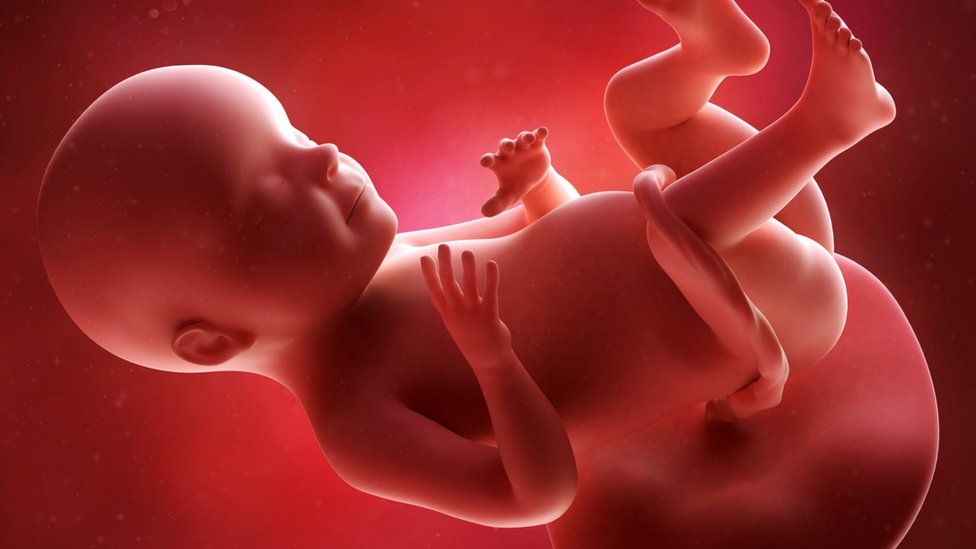
Baby's development in the womb
The development of your baby in the womb is a wonderful process. We have compiled a month-by-month timescale of pregnancy. But keep in mind that different pregnancies do develop at different rates. Also, bear in mind that the method doctors and midwives use to date your pregnancy means that you could be around 2 weeks out from this timescale (see below).
In this description, we have adopted the method that doctors use. For example, where we write ‘week 8’ we have counted this from the first day of your last period — your baby will usually only be 6 weeks old at this point.
How doctors date your pregnancy
The average pregnancy lasts for 38 weeks from the date you conceive (this is called conception). However, doctors usually date your pregnancy from the first day of your last menstrual period — that is the day your last period started. Using this method a pregnancy is said to last 40 weeks (280 days).
Your due date is usually calculated as 40 weeks from the first day of your last period.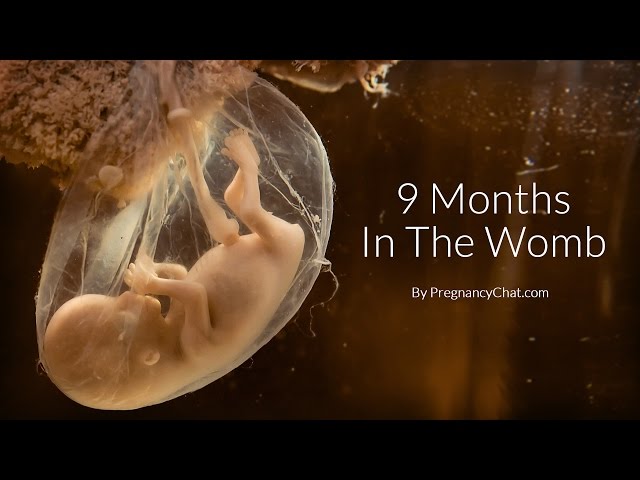 However, fertilisation of your egg by sperm happens a day or 2 after ovulation, which occurs in the middle of a 28-day cycle, and then it is a couple of days before the fertilised egg implants in the uterus, so for the first 2 weeks of the 40-week ‘pregnancy’ you are not actually pregnant at all.
However, fertilisation of your egg by sperm happens a day or 2 after ovulation, which occurs in the middle of a 28-day cycle, and then it is a couple of days before the fertilised egg implants in the uterus, so for the first 2 weeks of the 40-week ‘pregnancy’ you are not actually pregnant at all.
First month
After the egg has been fertilised by the sperm, it starts to divide into more cells. This happens all the time it is carried along the fallopian tube to the uterus. By the time it reaches the uterus the fertilised egg has become a cluster of cells which float in the uterine cavity until it embeds in the wall of the uterus. This implantation in the wall of the uterus is when conception is complete. This is roughly 4 weeks after day one of the last menstrual period if you have a 28-day cycle.
Second month
At 5 weeks the embryo is the size of a grain of rice (about 2 mm long) and would be visible to the naked eye. It has the beginnings of a brain with 2 lobes and its spinal cord is starting to form.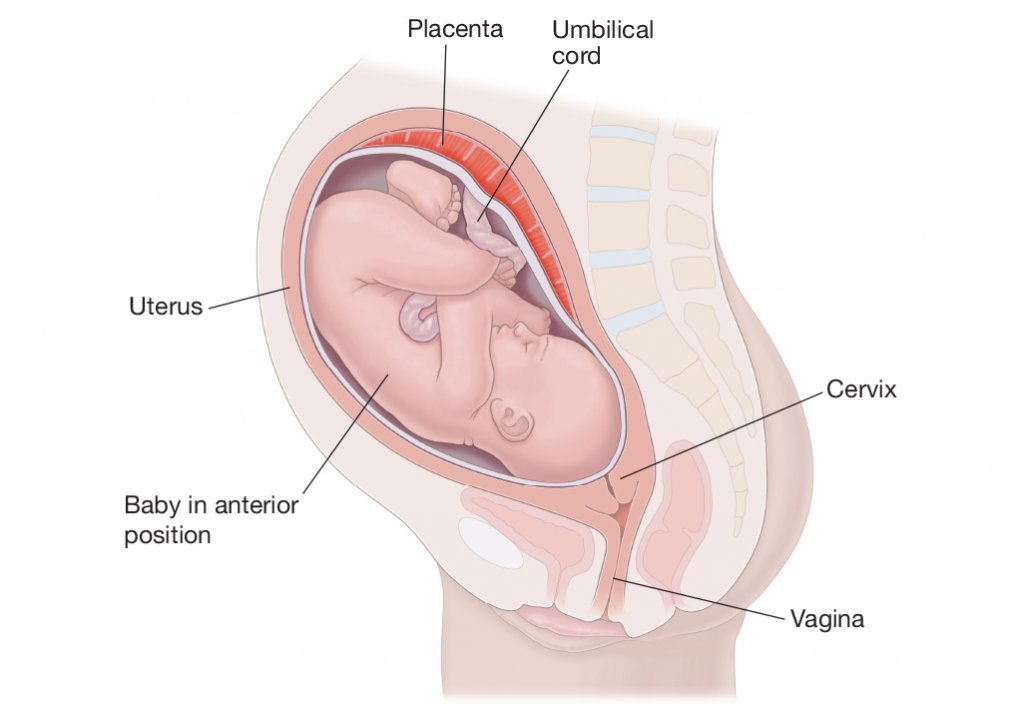
At 6 weeks of ‘pregnancy’ (3-4 weeks after fertilisation) the embryo has a head with simple eyes and ears. Its heart has 2 chambers and is beating. Small buds are present that will form arms and legs later. The beginnings of the spine can be seen and the lower part of the body looks like a tail.
At 7 weeks, the limb buds have grown into arms and legs. Nostrils can be seen on the embryo’s face. The heart now has 4 chambers.
At 8 weeks, the eyes and ears are growing, and your baby is about 2 cm long from crown to rump. The head is out of proportion with the body and the face is developing. The brain and the blood vessels in the head can be seen through the thin skin. The bones in the arms and legs start to harden and elbows and knees become apparent. Fingers and toes can also be seen.
Third month
What is known as the embryonic period finishes at the end of week 8 and the fetal period begins. This period sees rapid growth of the fetus, and the further development of the organs and tissues that were formed in the embryonic period.
At week 9 the head is almost half the crown to rump length of the fetus. Then the body grows substantially in length until by week 12, the head is more in proportion. By the time you are 12 weeks’ pregnant, your baby is just over 5 cm long from crown to rump.
Its body is fully formed, including ears, toes and fingers complete with fingernails. The external genitals appeared in week 9, and now, by week 12, have fully differentiated into male or female genitals. By week 12 the eyes have moved to the front of the face and the eyelids remain closed together.
Fourth month
Your baby may suck its thumb now. By 14 weeks your baby will be about 9-10 cm long. Its body is now covered with a layer of fine hair called lanugo. By 16 weeks its face is becoming more human in appearance, although the chin is small and the mouth is quite wide. Between 16 and 24 weeks you should feel your baby move for the first time — it may at first feel like butterflies.
Fifth month
The rapid growth that your baby has been experiencing now begins to slow a little.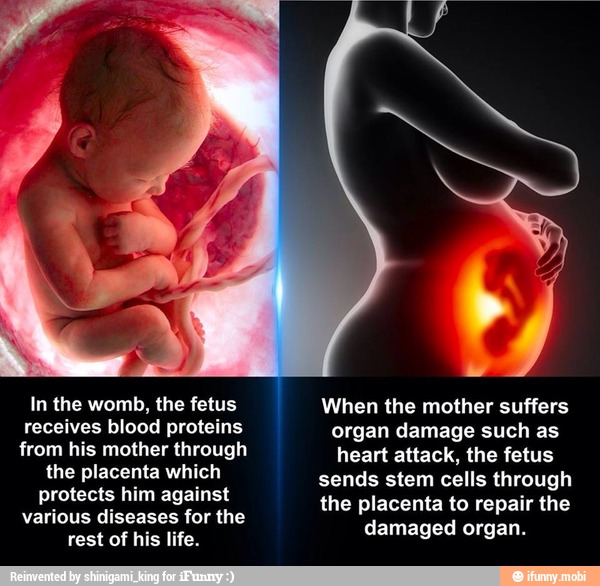 By week 20 your baby measures about 18 centimetres from crown to rump and is half as long as it will be when born. The legs are now in proportion with the body and the fingernails are well developed. Faint eyebrows are visible. At this stage, you will feel your baby moving about a lot, often when you lie down.
By week 20 your baby measures about 18 centimetres from crown to rump and is half as long as it will be when born. The legs are now in proportion with the body and the fingernails are well developed. Faint eyebrows are visible. At this stage, you will feel your baby moving about a lot, often when you lie down.
Sixth month
By 24 weeks your baby’s organs are fully formed. The baby now has the face of a newborn baby, although the eyes are rather prominent because fat pads are yet to build up in the baby’s cheeks. The eyelids are fused until weeks 25 to 26 when they open.
The skin is wrinkled, red and thin with little underlying fat. The skin is covered with a waxy substance called vernix, which protects it while it is floating in the uterus. The body is well muscled, but still thin. The baby has become better proportioned, with the size of the body catching up with the size of the head.
Your baby’s hearing is also well developed by this stage; the baby will respond to noise.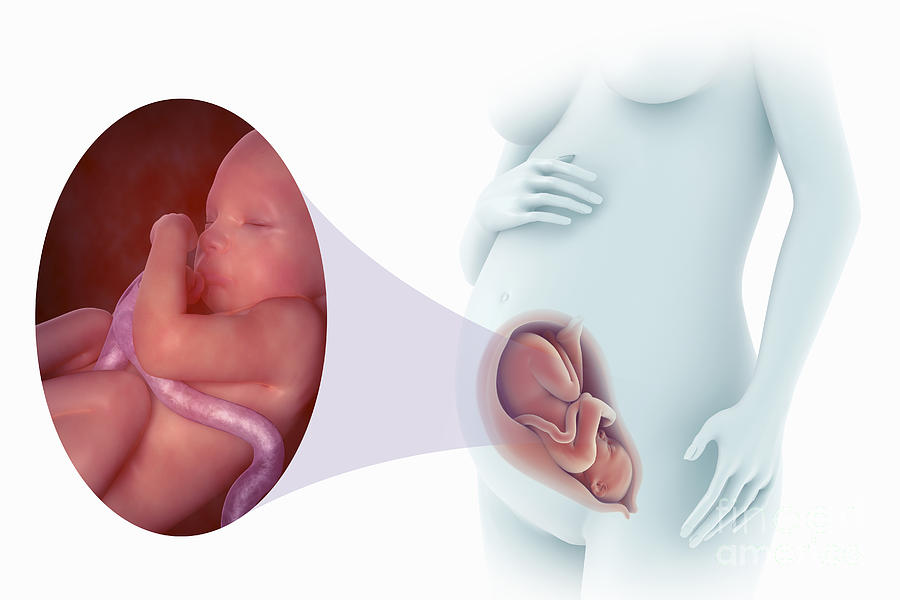
Seventh month
By 28 weeks lanugo hair has almost gone and hair is present on the head. Fat is being deposited under the skin.
Eighth month
Your baby is becoming plumper. By 30 weeks the toenails are present and by 32 weeks the fingernails have reached the ends of the fingers. The baby’s eyes will be open when the baby’s awake.
By about 32 weeks the baby will have settled into a downward position as there is no longer enough room left in the womb for it to move about freely. You will feel occasional vigorous jabs of the baby’s arms and legs.
If your baby is a boy, his testes will migrate down into the scrotum in the 8th month.
Ninth month
Sometime between 36 and 40 weeks, the baby’s head will engage — that is, the head will be lying just on top of your cervix.
The lanugo hair that had covered your baby has now mostly disappeared, although some hair may remain low on the forehead, in front of the ears and down the centre of the back.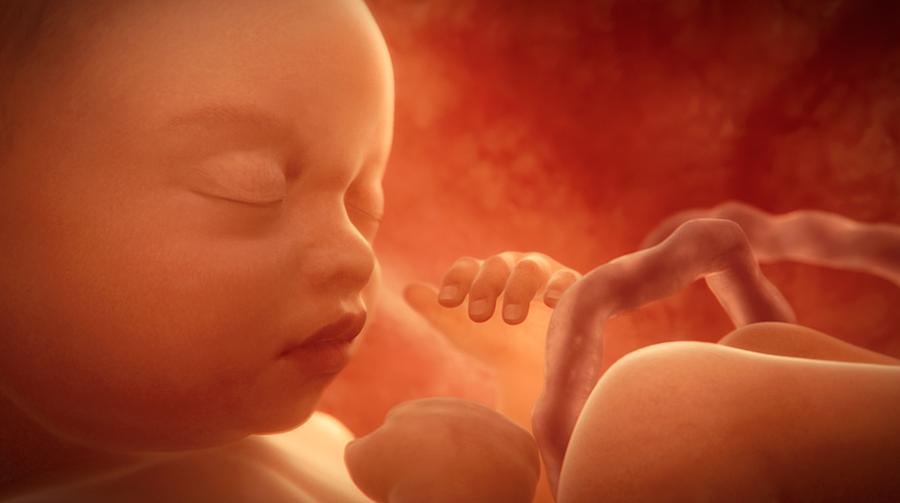 The toenails should have reached the tips of the toes.
The toenails should have reached the tips of the toes.
Full term
By full-term, your baby should weigh about 2.7 to 3.5 kg, although full-term babies can weigh anything from 2.5 to 5 kg, and measure 35 to 38 centimetres from crown to rump and 44 to 55 cm from the baby’s head to its toes. These are just average figures, though, and there can be wide variation in the measurements. So now, 38 weeks after conception, your baby has all its organs and body systems ready for the big moment when it is born into the world.
1. MayoClinic. Pregnancy week by week (updated 10 July 2014). https://www.mayoclinic.org/healthy-lifestyle/pregnancy-week-by-week/in-depth/prenatal-care/art-20045302 (accessed Dec 2015).
2. NHS Choices. Your pregnancy week by week (reviewed 22 Jul 2014). https://www.nhs.uk/conditions/pregnancy-and-baby/pages/pregnancy-week-by-week.aspx (accessed Dec 2015).
Development of a child in the womb
Daily
1st day.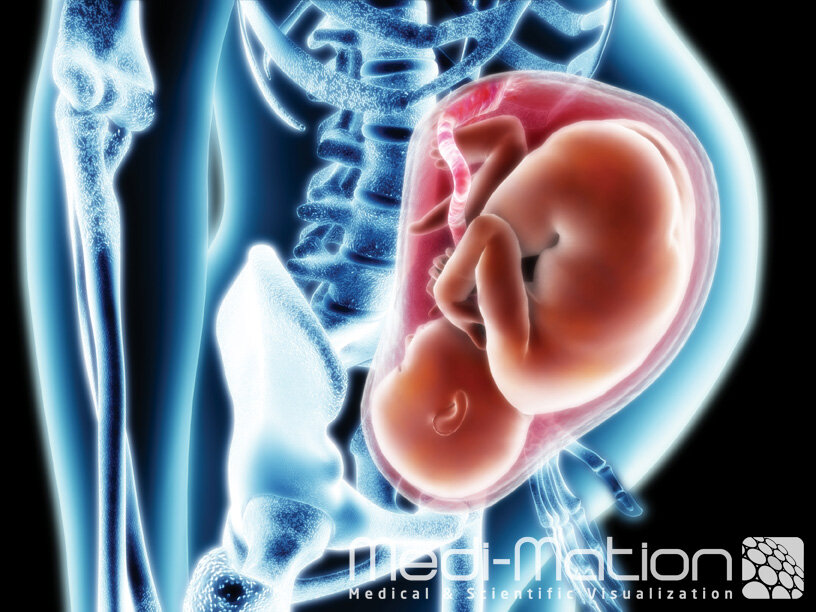 The sperm connects with the egg. As a result, one “large” (less than a grain of salt) cell is formed, which contains 46 chromosomes inherited from parents (23 chromosomes from each). A fertilized egg carries all the genetic information about the future person: his gender, eye color, skin and hair, facial features.
The sperm connects with the egg. As a result, one “large” (less than a grain of salt) cell is formed, which contains 46 chromosomes inherited from parents (23 chromosomes from each). A fertilized egg carries all the genetic information about the future person: his gender, eye color, skin and hair, facial features.
3rd-9th days. The fertilized egg travels down the fallopian tube into the uterus. The embryo is attached to its wall and soon begins to receive the necessary substances for nutrition and oxygen for breathing with maternal blood, which enters it through the umbilical cord and branched chorion (future placenta).
10th-14th days. The embryo increases by one tenth of its original size.
20th day. The process of laying the nervous system begins.
Day 21 . The heart starts beating.
Day 28 . The spine and muscles are being formed. Ultrasound shows arms, legs, eyes, ears.
Day 30 . Over the past month, the embryo has grown 10 thousand times and continues to develop actively. The heart pumps an increasing amount of blood through the circulatory system.
Day 35 . You can see the fingers on the baby's hand. The eyes darken because the child's body has already begun to produce pigment.
40th day. With the help of a special device, it can detect and record signals coming from the brain.
First trimester
6 weeks. The liver begins to produce blood cells, and the brain controls the movement of muscles and the work of the heart.
7 weeks. The eyelids begin to cover the baby's eyes, protecting them from light and dryness (from the 28th week, the baby will be able to open and close his eyes at will). At the same period of pregnancy, the inner ear of the baby is formed, the outer ear develops, the jaws are formed, the rudiments of teeth appear. But most importantly, the baby begins to move. However, the mother does not feel this, because the child is still too small.
But most importantly, the baby begins to move. However, the mother does not feel this, because the child is still too small.
8 weeks. The baby has grown to 2.5 centimeters. He already looks like an adult. The heart beats, the stomach produces gastric juice, the kidneys function. Muscles contract under the influence of impulses from the brain. By the blood of a child, you can determine his Rh-belonging. Fingers and knuckles formed. The baby's face acquires certain features, facial expressions develop. The child's body responds to touch.
10 weeks. The child is 4 centimeters tall and weighs approximately 2 grams. During this period, the baby begins to form external and internal genital organs.
12 weeks. The baby is growing. From time to time he sucks his thumb. During wakefulness, the child vigorously trains muscles: turns his head, bends his fingers and toes, opens and closes his mouth. The kid already hears and sees: if he begins to be disturbed by sharp sounds coming from the outside world, he tries to close his ears with his hands, and tries to shield his palm from the beam of light directed into his eyes.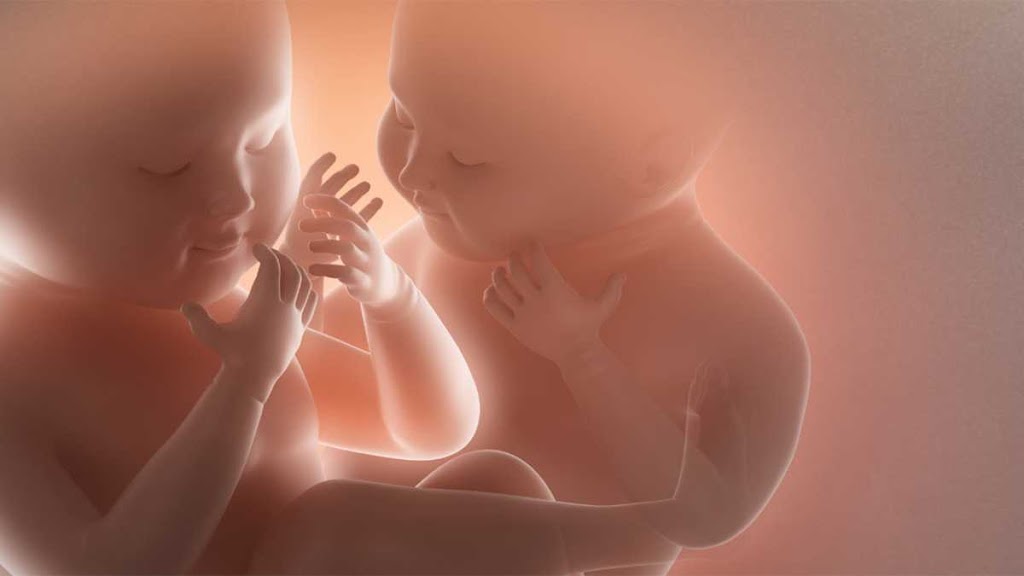 If you touch his palm, it will shrink into a fist. All these movements are carried out due to the fact that the baby has formed a vestibular apparatus, which helps him navigate in space.
If you touch his palm, it will shrink into a fist. All these movements are carried out due to the fact that the baby has formed a vestibular apparatus, which helps him navigate in space.
Second trimester
16 weeks. The child weighs approximately 150 grams and is 16-18 centimeters tall. Hair appears on the head, cilia and eyebrows appear on the face. The baby opens his mouth, swallows, sucks, smiles. During this period, the placenta begins to fully function, which connects him with his mother.
20 weeks. The growth of the baby reaches 30 centimeters, he has nails on his fingers and toes. Now my mother feels his movements, as from time to time he begins to engage in physical education: he pushes off from one wall of the uterus and swims to the other. In addition, the child may respond to a sharp sound or mother's excitement by jumping, which is perceived as active movement. If the baby begins to hiccup, the woman feels weak rhythmic tremors coming from the inside.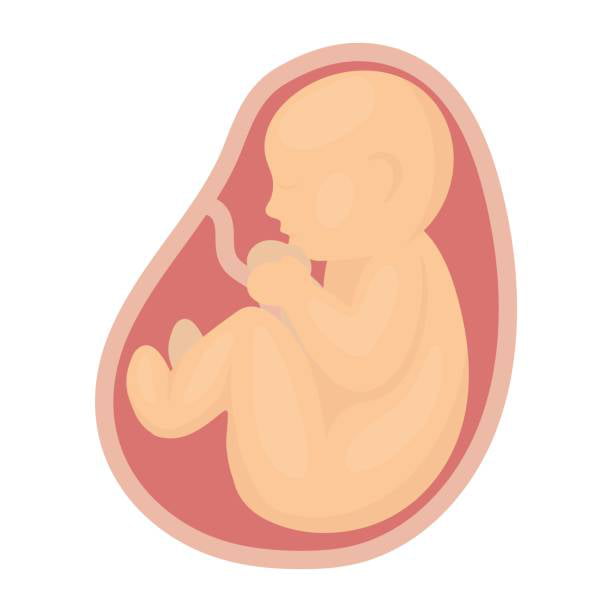 At 20 weeks, doctors listen to the baby's heartbeat with a stethoscope.
At 20 weeks, doctors listen to the baby's heartbeat with a stethoscope.
24 weeks. The kid may already be angry. This is proved by a photograph of a child at this age. It shows his angry look, muscle tension around the eyes, wrinkled lips, it is clear that he is crying, expressing his displeasure. By the way, to rest at night, the baby goes to bed and ... dreams. The child weighs about 500 grams, which is not much, but he has just begun to gain weight. His skin is red and wrinkled. Since she is still very tender, the baby is protected from the effects of amniotic fluid with a special lubricant. By the 24th week of pregnancy, the fat and sweat glands begin to function, the lungs of the child mature. They form a film that prevents them from sticking together when breathing. If the child is born at this time and provided with the necessary care, he will be able to survive.
Third trimester
28 weeks. The child weighs about 1000 grams and is 35 centimeters tall. He has already developed all the senses - these data are confirmed by the study of brain biocurrents (EEG) of an unborn child. He begins to recognize his mother's voice. The baby performs the first elementary respiratory movements. His skin thickens (thickens) and becomes more like the skin of a newborn. If childbirth begins at this stage of pregnancy, then they will be called premature, but doctors will be able to help the child survive.
He has already developed all the senses - these data are confirmed by the study of brain biocurrents (EEG) of an unborn child. He begins to recognize his mother's voice. The baby performs the first elementary respiratory movements. His skin thickens (thickens) and becomes more like the skin of a newborn. If childbirth begins at this stage of pregnancy, then they will be called premature, but doctors will be able to help the child survive.
32 weeks. The child weighs about 2000 grams, he develops subcutaneous fat, the arms and legs become plump. The immune system is being laid down: the baby begins to receive immunoglobulins from the mother, which will protect him from diseases in the first months of life. The volume of amniotic fluid surrounding the baby is one liter. Every three hours they are completely renewed, so the baby always swims in "clean" water, which can be swallowed painlessly.
34 weeks. The baby weighs 1800-2100 grams, its height reaches 40-41 centimeters.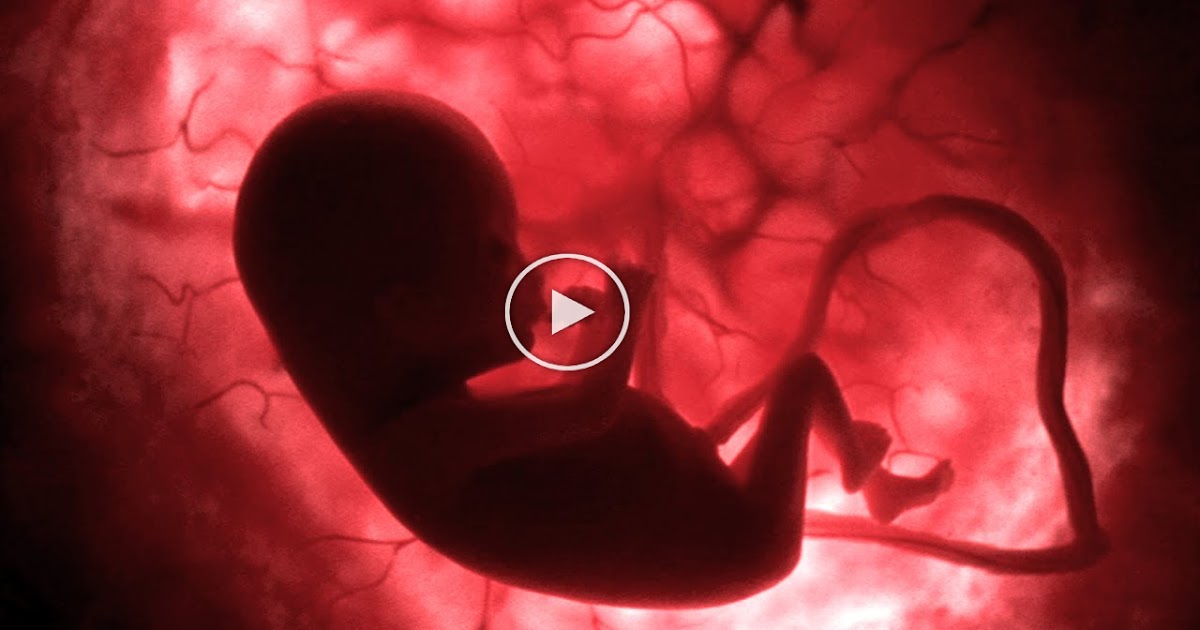 It becomes crowded in the uterus: he can no longer roll over and most often is located head down. His lungs are finally maturing, and in case of premature birth, the baby will breathe on his own. However, the subcutaneous fat layer is still poorly developed and poorly retains heat.
It becomes crowded in the uterus: he can no longer roll over and most often is located head down. His lungs are finally maturing, and in case of premature birth, the baby will breathe on his own. However, the subcutaneous fat layer is still poorly developed and poorly retains heat.
36-38 weeks. From the ninth month of pregnancy, the baby gains weight daily (up to 14 grams). Iron accumulates in his liver, which will help hematopoiesis in the first year of life. The fluff that covers the baby's skin (especially the shoulders and back) disappears by the time of birth. The child grows rapidly, the uterus becomes too tight, so his movements are felt more intensely.
Usually at 38 weeks its head descends towards the entrance to the small pelvis. The baby is already ready for independent life and is counting the days until birth...
Childbirth
Childbirth that occurred at 38-40 weeks of pregnancy is considered timely.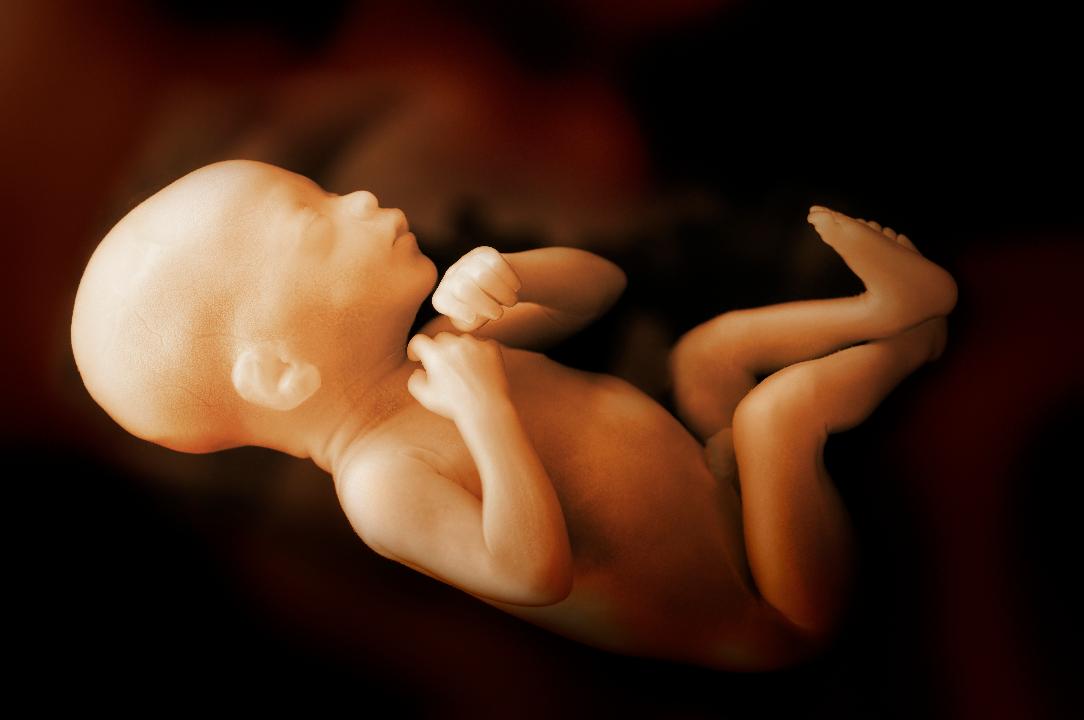 Typically, a baby is born with a weight of about 3000 grams or more and a height of about 50 centimeters. Barely born, he makes his first cry. The child breathes independently, his heart beats, he actively moves his arms and legs .
Typically, a baby is born with a weight of about 3000 grams or more and a height of about 50 centimeters. Barely born, he makes his first cry. The child breathes independently, his heart beats, he actively moves his arms and legs .
Sources
- Kadan G., Aral N. Effects of Mycotoxins on Child Development. // Curr Mol Pharmacol - 2020 - Vol - NNULL - p.; PMID:33319679
- Stoye DQ., Blesa M., Sullivan G., Galdi P., Lamb GJ., Black GS., Quigley AJ., Thrippleton MJ., Bastin ME., Reynolds RM., Boardman JP. Maternal cortisol is associated with neonatal amygdala microstructure and connectivity in a sexually dimorphic manner. // Elife - 2020 - Vol9 - NNULL - p.; PMID:33228850
- Kendal E. Unique benefits of ectogenesis outweigh potential harms. // Emerg Top Life Sci - 2019 - Vol3 - N6 - p.719-722; PMID:32915221
- Kpewou DE., Poirot E., Berger J., Som SV., Laillou A., Belayneh SN., Wieringa FT. Maternal mid-upper arm circumference during pregnancy and linear growth among Cambodian infants during the first months of life.
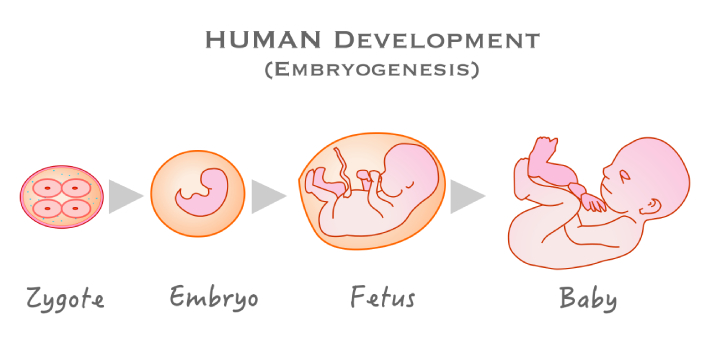 // Matern Child Nutr - 2020 - Vol16 Suppl 2 - NNULL - p.e12951; PMID:32835455
// Matern Child Nutr - 2020 - Vol16 Suppl 2 - NNULL - p.e12951; PMID:32835455 - Lautarescu A., Craig MC., Glover V. Prenatal stress: Effects on fetal and child brain development. // Int Rev Neurobiol - 2020 - Vol150 - NNULL - p.17-40; PMID:32204831
- Apostol AC., Jensen KDC., Beaudin AE. Training the Fetal Immune System Through Maternal Inflammation-A Layered Hygiene Hypothesis. // Front Immunol - 2020 - Vol11 - NNULL - p.123; PMID:32117273
- Paglia L. Taste development and prenatal prevention. // Eur J Paediatr Dent - 2019 - Vol20 - N4 - p.257; PMID:31850766
- de Souza RJ., Zulyniak MA., Stearns JC., Wahi G., Teo K., Gupta M., Sears MR., Subbarao P., Anand SS. The influence of maternal and infant nutrition on cardiometabolic traits: novel findings and future research directions from four Canadian birth cohort studies. // Proc Nutr Soc - 2019- Vol78 - N3 - p.351-361; PMID:31140389
- Altimier L., Phillips R. Neuroprotective Care of Extremely Preterm Infants in the First 72 Hours After Birth.
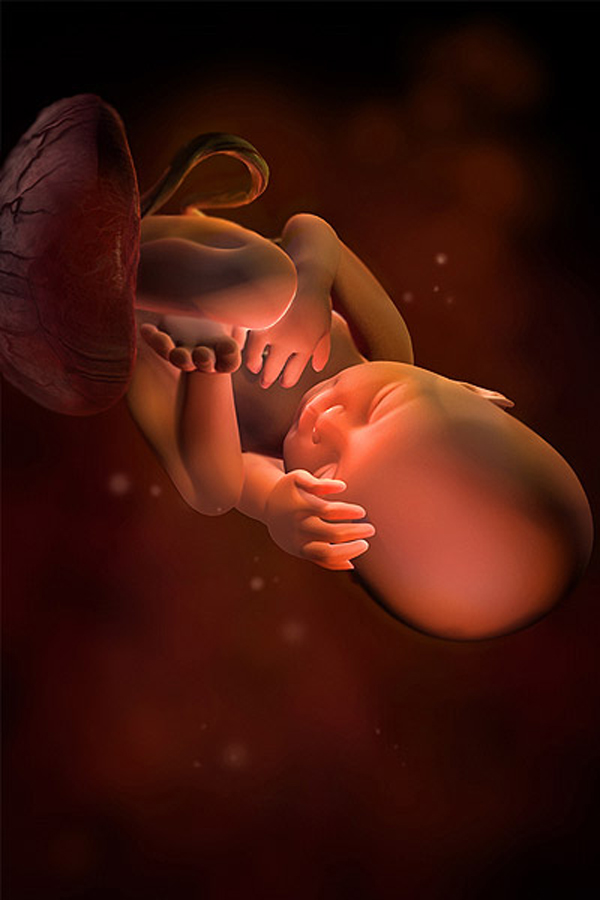 // Crit Care Nurs Clin North Am - 2018 - Vol30 - N4 - p.563-583; PMID:30447814
// Crit Care Nurs Clin North Am - 2018 - Vol30 - N4 - p.563-583; PMID:30447814
Development of a child in the womb from conception to birth Frequently asked questions on medicine and health: doctors' answers
Pregnancy and childbirth is the main and responsible stage in the life of every woman. With the onset of pregnancy, a lot of things are rebuilt in a woman’s body and a phased intrauterine development of the fetus occurs over 9months. However, how does a child develop in the womb from conception to birth?
Within 24 hours after fertilization, the egg begins to rapidly divide into many cells. It remains in the fallopian tube for about three days after conception. The fertilized egg (now called a blastocyst) then continues to divide, slowly passing through the fallopian tube and into the uterus. Once there, its next task is to attach itself to the endometrium (the inner lining of the uterus). This is called implantation. Also, the placenta begins to form, which will nourish the unborn child.
Before implantation, however, the blastocyst breaks free of its protective coating. At this point, the endometrium becomes thicker and the cervix (the opening between the uterus and the birth canal) closes with a mucous plug.
Within 3 weeks, blastocyst cells will eventually form an embryo. By this time, the first nerve cells had already formed.
Development in 4 weeks : During this stage, the baby develops the structures that will eventually form its face and neck. The heart and blood vessels continue to develop. The lungs, stomach and liver also begin to develop. A home pregnancy test will show a positive result.
Development in 8 weeks : eyelids and ears are forming, the tip of the nose can be seen. The arms and legs are well formed. The fingers and toes become longer and more distinct.
Development at 12 weeks : baby begins to make his own movements. Also, when visiting a doctor, he can hear the heartbeat of a developing baby.
Development at 16 weeks : The baby's eyes can blink and the heart and blood vessels are fully formed. There are fingerprints on the child's fingers and toes.
Development in 20 weeks : Baby can suck thumb, yawn, stretch and make faces. The mother-to-be can feel the baby moving in her stomach.
Ultrasound time . Ultrasound is usually done for all pregnant women at 20 weeks. During this ultrasound, the doctor will make sure that the placenta is healthy and attached properly, and that the baby is growing properly. A pregnant woman can see the baby's heartbeat and movements of his body, arms and legs on an ultrasound. You can also find out the gender of the child.
Development in 24 weeks : the baby reacts to sounds, his pulse may increase. When the inner ear is fully developed, the baby can feel upside down in the womb.
Development in 28 weeks : The baby changes position frequently during this stage of pregnancy.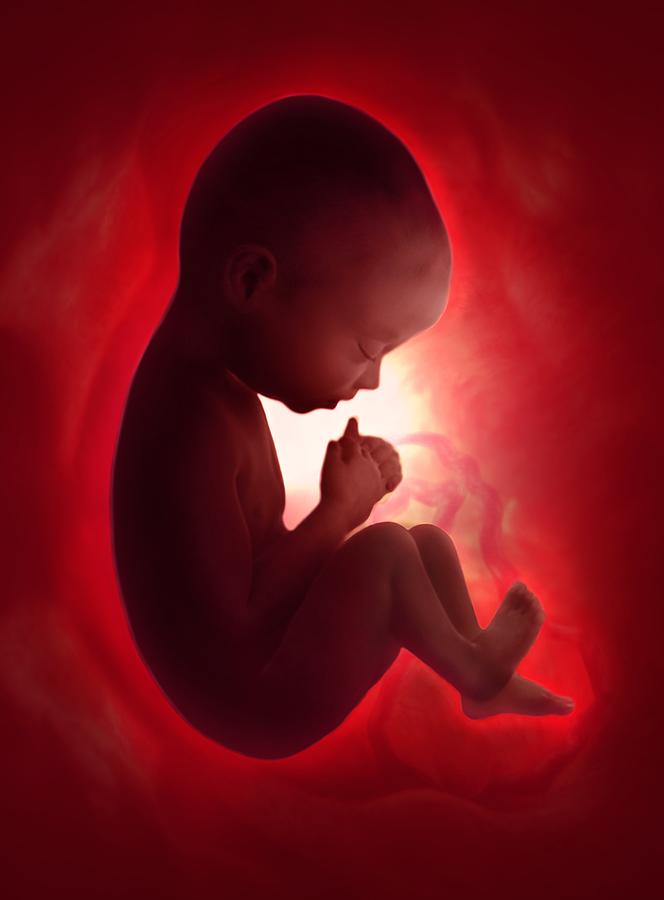 At this stage of development, a pregnant woman can already give birth - this is called premature birth. In this case, the child is likely to survive.
At this stage of development, a pregnant woman can already give birth - this is called premature birth. In this case, the child is likely to survive.
Development at 32 weeks : The baby's skin becomes less wrinkled as a layer of fat begins to form under the skin. From now until delivery, the baby will gain half its birth weight. The expectant mother may notice that a yellowish liquid flows from the breast. This is colostrum, which helps prepare the breasts for milk production. During this stage of pregnancy, most women see a doctor every two weeks.
Development at 36 weeks : Babies vary in size depending on many factors. Thus, the overall growth rate of a child is just as important as its actual size. The average baby at this stage is about 47 cm and weighs about 2.7 kg. The brain is developing rapidly. The lungs are almost fully developed. By this point, the head is usually lowered into the pelvis. A baby is considered "term" when it is 37 weeks old.